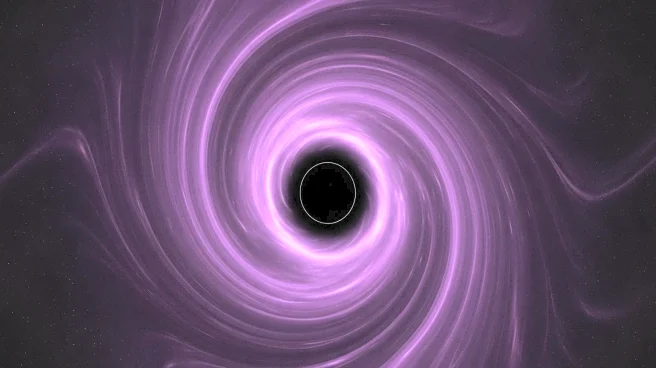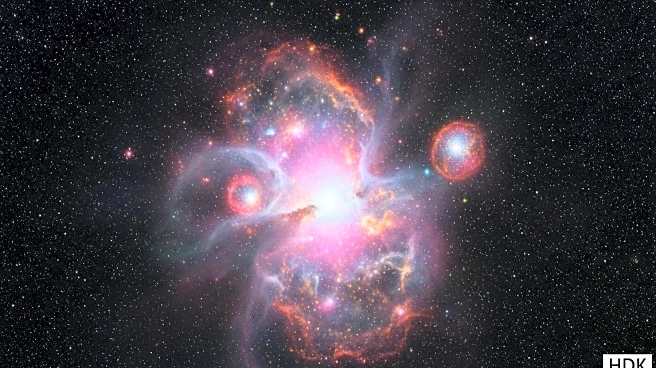What's Happening?
Scientists have detected methane gas on the dwarf planet Makemake, suggesting it is a dynamic icy world. This discovery was made by a team led by the Southwest Research Institute using NASA's James Webb Space Telescope. Makemake, one of the largest and brightest worlds beyond Neptune, is now the second trans-Neptunian object, after Pluto, confirmed to have gas. The presence of methane in the gas phase above Makemake's surface indicates that it is not an inactive remnant of the outer solar system but a dynamic body where methane ice is still evolving. The finding could be due to a tenuous atmosphere or transient activity such as cryovolcanic plumes.
Why It's Important?
The discovery of methane on Makemake is significant as it challenges previous assumptions about the dwarf planet being an inactive body. This finding could reshape our understanding of the outer solar system's dynamics and the processes occurring on distant icy worlds. The presence of a tenuous atmosphere or transient activity could provide insights into the evolution of similar celestial bodies. This discovery also highlights the capabilities of the James Webb Space Telescope in advancing our knowledge of the solar system.
What's Next?
Future observations with the James Webb Space Telescope at higher spectral resolution will help determine whether the methane arises from a thin bound atmosphere or from plume-like outgassing. These observations could provide further insights into the processes occurring on Makemake and similar trans-Neptunian objects, potentially leading to new discoveries about the outer solar system.










